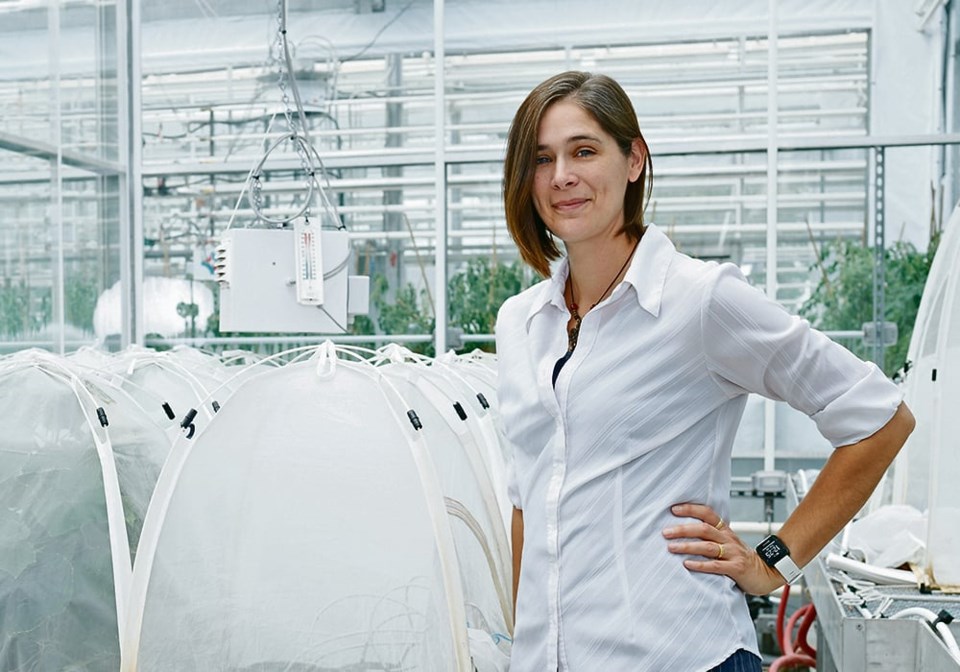WESTERN PRODUCER — Canada’s floriculture industry is not small.
In 2020, sales of flowers, bedding plants and potted plants was $1.7 billion. Most of those plants are grown inside southern Ontario and British Columbia greenhouses.
Like other Canadian farmers, floriculture producers have problems with insects and disease. But to solve those problems, they don’t rely on traditional pesticides.
“In floriculture, there are a few pests that are resistant against almost every insecticide that’s available in Canada,” said Rose Buitenhuis, program leader for biological crop protection at the Vineland Research Centre in Niagara, Ont.
“The pests are just not killed anymore by the products that the growers apply.”
Some are applying bio-pesticides in rotation with chemicals because it’s become obvious that applying the same pesticide, to the same pest, is not sustainable.
“The greenhouse growers have seen very clearly that the use of pesticides is a short-term solution,” Buitenhuis said.
“The long-term solution really is in trying to use a little (pesticides) as possible.”
Biological pesticides, or bio-pesticides, are products derived from fungi, bacteria, minerals and other natural sources.
One example is a fungus called beauveria-bassiana. Health Canada registered it in 2009 and it’s sold under the brand name Botanigard.
It’s used to control whitefly, thrips and aphids in greenhouse crops.
Botanigard and similar products are still effective, but Canada’s floriculture and horticulture sectors need other options to control insects and disease.
That’s partly because of consumer expectations. Buyers of greenhouse cucumbers, tomatoes and peppers want nutritious veggies. but they don’t want pesticides.
“(They) may not specifically seek out crops treated with biocontrols, they are demanding that food, in particular fresh produce, is free from pesticide residues,” says the Biological Products Industry Alliance (BPIA), a group that represents the bio-pesticides and bio-fertilizer sector.
That’s why Canada’s greenhouse industry is working with Buitenhuis, and other Vineland researchers, to push more bio-pesticides onto the market.
Vineland has a biological crop protection service, where its researchers collaborate with companies to create new products and evaluate the performance of bio-pesticides. They also educate growers on how to use the products.
“The interest (from) companies, asking us to do research on getting new products registered (is strong),” Buitenhuis said. “That’s a very good indicator of the interest that exists, for getting bio-pesticides on the market.”
Data shows that horticultural producers are the main users of biopesticides, in Canada and abroad.
The BPIA says the global market for bio-controls was worth about US$5 billion in 2020. More than 70 percent of that $5 billion was sold to fruit and veggie growers around the world.
The $5 billion figure is small compared to the global market for pesticides, which is worth $80 to $100 billion annually.
Flower and greenhouse vegetable producers may be embracing bio-pesticides, but adoption is much slower in broad acre crops.
One reason could be need.
Conventional insecticides, fungicides and herbicides are still working and are relatively cheap.
Bio-pesticides may make sense for high-value crops, like greenhouse vegetables and bedding plants. However, the economics and logistics of bio-pesticides are a major challenge in crops like canola, wheat and barley.
“It tends to be more expensive to produce, more expensive to apply and more complicated to apply,” said Gary Peng, an Agriculture Canada plant pathologist in Saskatoon, in 2020. “In the spring, the growers are racing with the time to get the seeding done. If you need to modify the procedure too much… it’s very difficult for growers to adopt any of those new technologies.”
It’s more logical to breed and develop crops with genetic resistance to disease, Peng said.
There could still be a role for bio-pesticides. Maybe to treat a certain portion of a field, where a soil pathogen is a massive problem, he added.
Or a bio-pesticide could be coated on the seed, providing an extra layer of protection on top of the genetic defence.




